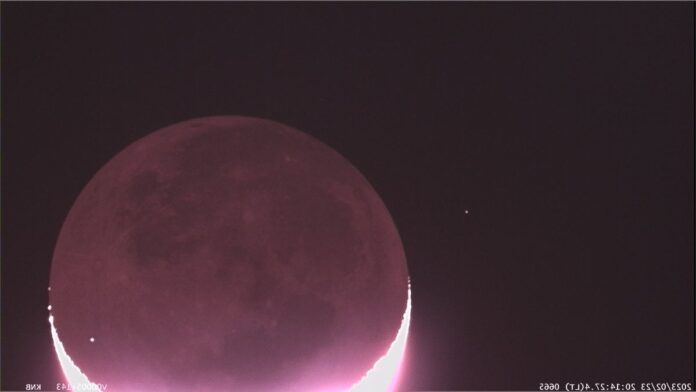A Japanese astronomer captured the telltale flash of a meteorite impacting the moon, causing a brief flash on our celestial neighbor’s nightside.
Daichi Fujii, curator of the Hiratsuka City Museum, recorded the event using cameras set to monitor the moon.
The time of the flash was 20:14:30.8 Japan Standard Time (7:14 a.m. EST, or 1114 GMT) on Feb. 23. The meteorite appears to have struck near Ideler L crater, slightly northwest of Pitiscus crater, Fujii said.
Related: What are asteroids?
Meteors travel on average at around 30,000 mph (48,280 kph), or 8.3 miles per second (13.4 km/s). Their high-velocity impacts generate intense heat and create craters, while also giving out a brilliant flash of visible light. Moon impacts can be seen from Earth, as captured above, if they are large enough and occur in an area during lunar nighttime facing Earth.
The newly created crater could be around a dozen meters (39 feet) in diameter and may eventually be imaged by NASA’s Lunar Reconnaissance Orbiter or India’s Chandrayaan 2 lunar probe, Fujii said.
私の観測史上最大の月面衝突閃光を捉えることができました!2023年2月23日20時14分30.8秒に出現した月面衝突閃光を、平塚の自宅から撮影した様子です(実際の速度で再生)。なんと1秒以上も光り続ける巨大閃光でした。月は大気がないため流星や火球は見られず、クレーターができる瞬間に光ります。 pic.twitter.com/Bi2JhQa9Q0February 24, 2023
While meteors collide with Earth every day, the vast majority of these burn up completely on contact with the atmosphere. The moon, however, has only a very tenuous exosphere, meaning meteors that would not reach Earth’s surface commonly impact the moon, creating its crater-covered appearance. These rocks constantly pound the lunar surface, sometimes breaking it right down to fine particles, or lunar soil.
Capturing these events also has science value, helping scientists learn the rate of impacts on the lunar surface, which is all the more relevant with the U.S. and other countries preparing to send astronauts to the moon.
Follow us on Twitter @Spacedotcom (opens in new tab) or Facebook (opens in new tab).

